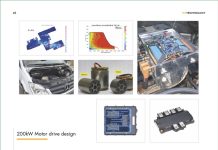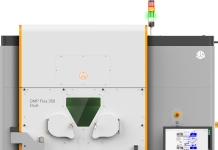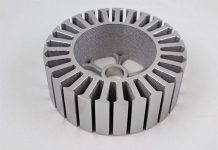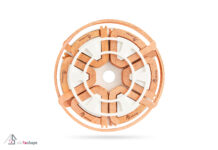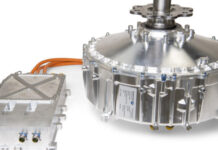The researchers of the University of Sheffield, in collaboration with a team of the University of Wisconsin-Madison, have developed the prototype of a new lighter and more efficient electric motor printed in 3D, using affordable metal PBF 3D printing technology. It might be a development able to pave the way to future electric motors to increase their power using less material.
The prototype uses a higher-percentage silicon electrical steel that reduces energy losses and it consists of a stator, a circular-shaped object with prongs that wires can be wrapped around to create a magnetic field.
The biggest design difference between the prototype and traditional stators can be seen in the prongs themselves, as they feature an intricate design of thin geometric lines meant to reduce energy loss.
«When you have 30% lower mass, you would expect that your torque would also be lower, but that wasn’t the case. So, this shows that you know you’re actually going to net torque density improvement in this machine and if we can further improve this, (making a more efficient 3D printed electric motor) would be a game changer» said one of the researchers.
Il team added: «This project has shown the large potential that additive manufacturing has for electrical machines, with lightweight, efficient structures that have never before been possible using any other manufacturing technique. It was a pleasure to work with the team at Wempec to turn this idea into a reality».


